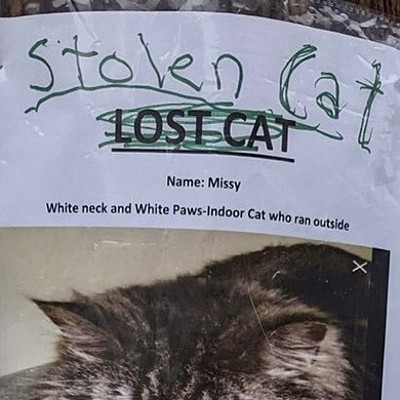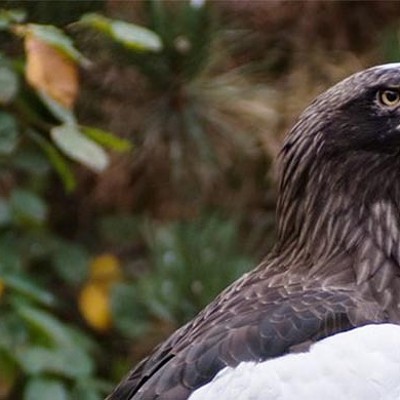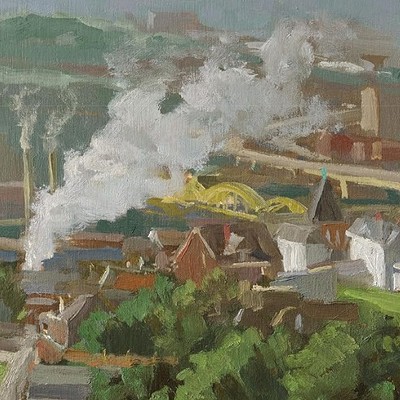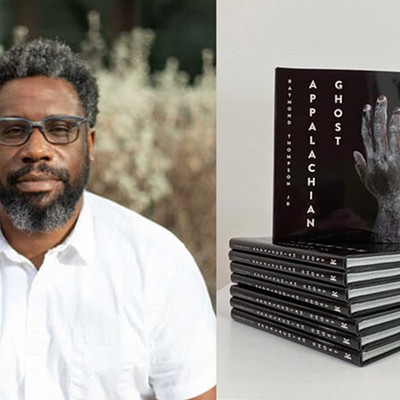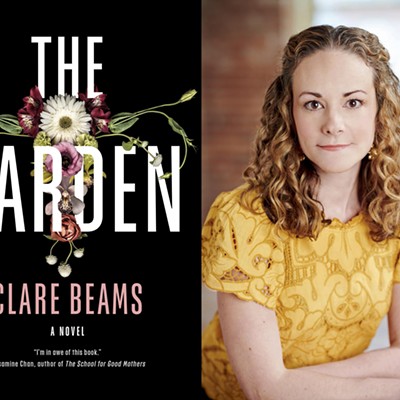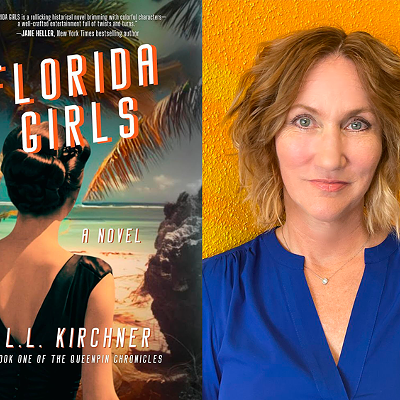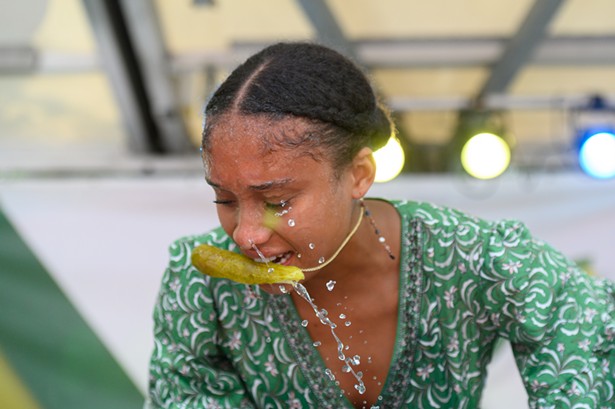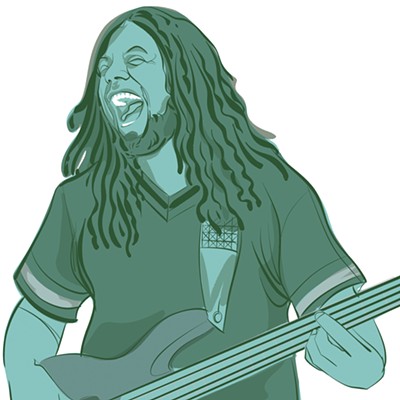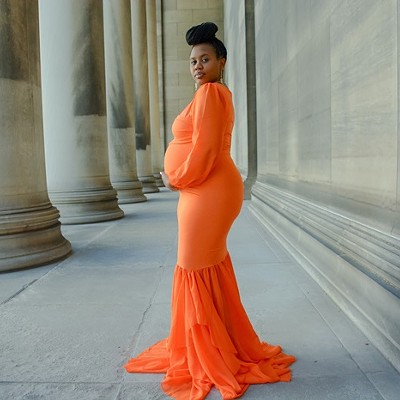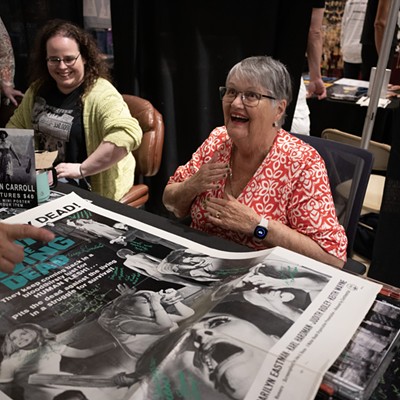A Conversation with Joyce Carol Oates
“In retrospect, the novel feels prophetic — but I wish it had not been.”
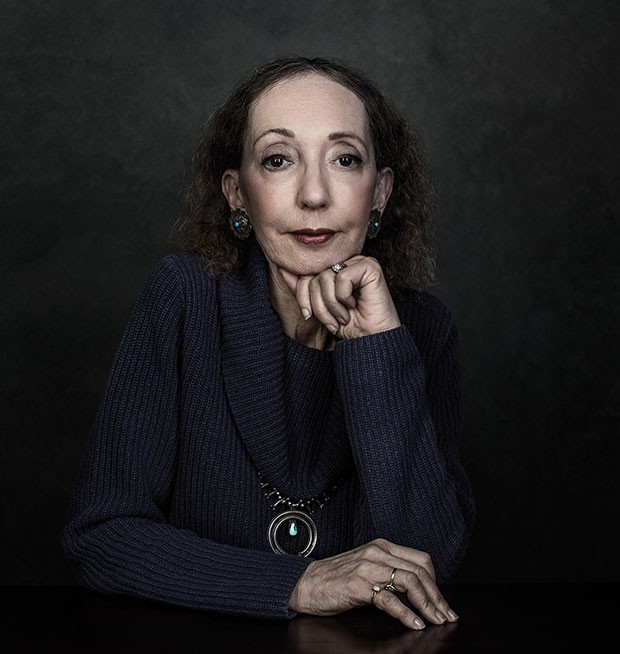
Joyce Carol Oates
AN EVENING WITH JOYCE CAROL OATES
7 p.m. Tue., April 18 (5:30 p.m. VIP reception). Mellon Middle School Auditorium, 11 Castle Shannon Blvd., Mount Lebanon. $20-50. mtlebanonlibrary.org
[
{
"name": "Local Action Unit",
"component": "24929589",
"insertPoint": "3",
"requiredCountToDisplay": "1"
}
]
There is no form America’s pre-eminent woman of letters has not tackled. Joyce Carol Oates has published more than 45 novels, plus novellas, short stories, poetry, drama, essays and memoir. Her best-known works include them (1969), We Were the Mulvaneys (1996), Blonde (2000) and the 1966 short story “Where Are You Going, Where Have You Been,” which Oates once said was inspired by Bob Dylan’s “It’s All Over Now, Baby Blue.”
Difficult subjects — violence, poverty, child abduction, adolescent sexuality, failing families and sexual violence — run throughout her work. She has explored the struggles of Depression-era young people, severe amnesia, and the lives of Marilyn Monroe and Mike Tyson. Her new novel, A Book of American Martyrs (Harper Collins), follows the trajectories of two families — one grieving a murdered abortion doctor, the other the family of the jailed man who committed the murder.
Oates, perhaps surprisingly, has also proved to be a prolific tweeter, often re-tweeting political posts, but sometimes weighing in herself. On April 1, she tweeted, “Was this year’s April Fool Day the least inventive & funny in recent memory? Suggests T***p Dark Age wearing out satirists. #BeyondSatire.” Other times, like the rest of us, she simply posts photos of her cats or of beautiful wildflowers blooming in Northern California.
With Oates, you never know what’s next. What you do know is that there is always another work coming. Oates also continues her other life-long passion, teaching; currently, she teaches creative writing at the University of California Berkeley. This fall, she’ll teach at both Princeton and New York University.
In a rare Pittsburgh appearance, Oates speaks at the Mount Lebanon Library at 7 p.m. Tue., April 18. City Paper interviewed her via email.
Your latest novel is incredibly timely, but also deals intimately with two families. What inspired A Book of American Martyrs?
I was inspired several years ago to write a novel about two American families — each very different from the other, yet similar in some ways and linked by a singular tragic act. I wanted each to be a sort of mirror-reflection of the other, and each to misunderstand the other. I had not anticipated how, when the novel was published, the United States would be so much more explicitly, dramatically, even violently divided than it had been at the time of the writing. In retrospect, the novel feels prophetic — but I wish it had not been.
What did you edit out of American Martyrs?
Probably about 50 pages, all told. But [in Mount Lebanon] I will be reading one of the short chapters, that casts some light upon the abortion provider Dr. Voorhees, but is missing from the actual novel.
What do you think an artist can do to move the world forward? What is her obligation?
Writers and poets, artists generally, do not have “obligations.” But it is a healing sort of art that tries to bring people together, not further divide them; a sympathetic sort of art that allows people to identify with one another, when they are very different.
In an interview with the Paris Review nearly 30 years ago, you said, “A memory belonging to my mother or father seems almost to ‘belong’ to me.” Can you expand upon that?
The collective memory within a family is a mysterious, wonderful phenomenon — it is aided by photographs, of course, without which many of our memories would fade.
Often I write about families — the bonds within them, the stresses, alliances, tragic misunderstandings. But I tend to have faith in the younger generations to heal wounds and to forge a new consciousness.
Your memoir A Widow’s Story, about your husband’s death, felt very intimate and quite personal. Can you talk about your decision to write that book, as well as the process of writing it?
The memoir is not a “written” memoir — that is, not composed in retrospect, looking back in time, but rather as a sequence of journal entries, in the present tense. The journal writer does not know what will come next, even the next day, and so a memoir that is comprised of journal entries is nearly always under the stress of the immediate; there is not the luxury of looking back over a period of time, to sum up — “And then ...” After a profound loss, experiences seem to come in jagged fragments, not in [w]holes; one is in the present, yet continually reminded of the loss, of what is gone from the world, as if vision itself is impaired.
You’ve spoken and written about your dreams before.
Most of my dreams — I would assume, most dreams — are indecipherable. We know that the brain restores memories through sleep and dreams; if you don’t sleep well, your memory will be affected. Occasionally, an individual will have vivid, powerful, memorable dreams, that might even be life-altering. But most dreams seem to fade swiftly when we wake, and can’t be retrieved.
I have rarely tried to compose a story based upon a dream image or fragment. It is very, very difficult. My only extended example is my novel Mudwoman, which is based upon an actual dream, that comprises just a few pages in the novel, but holds it together thematically.
When you sit down to write, do you start with a character? Or a place?
Generally I begin with a setting, and the characters seem to evolve out of the setting; their relationships with one another generate a story, a “plot.” I am fascinated by the layers of human personality, and I am particularly interested in the idiosyncrasies of the human voice.
Do you still write your drafts in long-hand?
Yes, I write much in long-hand, especially dialogue, and all my poems.
Do you enjoy writing the initial draft more than the editing process? Or are they both equally rewarding, if different?
Final revisions are always the most enjoyable since one is working much more smoothly, at almost the pace of a reader. Initially, the writing is slow and halting, with many missteps and new beginnings. You can work for hours and still be on page one ….
What is your favorite underappreciated work (of yours)?
My personal favorite is Mysteries of Winterthurn, a postmodern Gothic tale, I suppose it might be called. To me, it was a magical world to enter; I loved the protagonist, a young detective who never quite loses his innocence and curiosity, though around him terrible things happen, and the reader knows more, at times, than Xavier does. The cover for the Ontario Review edition of this novel is of a walled garden, that takes my breath away when I see it — I don’t know why …
What was the most recent novel you read? And which contemporary writers are you reading?
The most recent novel I’ve read? A very strange Borgesian work of fiction titled The Story of My Teeth, by Valeria Luiselli. It’s a highly stylized, experimental work, not at all “novelistic” in the usual sense of the word. I am just beginning the wonderfully imaginative and touching Jerzy, by Jerome Charyn.
Can you talk about your relationship to Twitter?
Twitter is a communal phenomenon, and most tweets are in relationship to others. Virtually all of my tweets are conversational responses to others’ remarks. Though often I might comment on a new book, film or TV series, and since the election, on political subjects. (When I’d started on Twitter several years ago it was not at all politicized.)
Difficult subjects — violence, poverty, child abduction, adolescent sexuality, failing families and sexual violence — run throughout her work. She has explored the struggles of Depression-era young people, severe amnesia, and the lives of Marilyn Monroe and Mike Tyson. Her new novel, A Book of American Martyrs (Harper Collins), follows the trajectories of two families — one grieving a murdered abortion doctor, the other the family of the jailed man who committed the murder.
Oates, perhaps surprisingly, has also proved to be a prolific tweeter, often re-tweeting political posts, but sometimes weighing in herself. On April 1, she tweeted, “Was this year’s April Fool Day the least inventive & funny in recent memory? Suggests T***p Dark Age wearing out satirists. #BeyondSatire.” Other times, like the rest of us, she simply posts photos of her cats or of beautiful wildflowers blooming in Northern California.
With Oates, you never know what’s next. What you do know is that there is always another work coming. Oates also continues her other life-long passion, teaching; currently, she teaches creative writing at the University of California Berkeley. This fall, she’ll teach at both Princeton and New York University.
In a rare Pittsburgh appearance, Oates speaks at the Mount Lebanon Library at 7 p.m. Tue., April 18. City Paper interviewed her via email.
Your latest novel is incredibly timely, but also deals intimately with two families. What inspired A Book of American Martyrs?
I was inspired several years ago to write a novel about two American families — each very different from the other, yet similar in some ways and linked by a singular tragic act. I wanted each to be a sort of mirror-reflection of the other, and each to misunderstand the other. I had not anticipated how, when the novel was published, the United States would be so much more explicitly, dramatically, even violently divided than it had been at the time of the writing. In retrospect, the novel feels prophetic — but I wish it had not been.
What did you edit out of American Martyrs?
Probably about 50 pages, all told. But [in Mount Lebanon] I will be reading one of the short chapters, that casts some light upon the abortion provider Dr. Voorhees, but is missing from the actual novel.
What do you think an artist can do to move the world forward? What is her obligation?
Writers and poets, artists generally, do not have “obligations.” But it is a healing sort of art that tries to bring people together, not further divide them; a sympathetic sort of art that allows people to identify with one another, when they are very different.
In an interview with the Paris Review nearly 30 years ago, you said, “A memory belonging to my mother or father seems almost to ‘belong’ to me.” Can you expand upon that?
The collective memory within a family is a mysterious, wonderful phenomenon — it is aided by photographs, of course, without which many of our memories would fade.
Often I write about families — the bonds within them, the stresses, alliances, tragic misunderstandings. But I tend to have faith in the younger generations to heal wounds and to forge a new consciousness.
Your memoir A Widow’s Story, about your husband’s death, felt very intimate and quite personal. Can you talk about your decision to write that book, as well as the process of writing it?
The memoir is not a “written” memoir — that is, not composed in retrospect, looking back in time, but rather as a sequence of journal entries, in the present tense. The journal writer does not know what will come next, even the next day, and so a memoir that is comprised of journal entries is nearly always under the stress of the immediate; there is not the luxury of looking back over a period of time, to sum up — “And then ...” After a profound loss, experiences seem to come in jagged fragments, not in [w]holes; one is in the present, yet continually reminded of the loss, of what is gone from the world, as if vision itself is impaired.
You’ve spoken and written about your dreams before.
Most of my dreams — I would assume, most dreams — are indecipherable. We know that the brain restores memories through sleep and dreams; if you don’t sleep well, your memory will be affected. Occasionally, an individual will have vivid, powerful, memorable dreams, that might even be life-altering. But most dreams seem to fade swiftly when we wake, and can’t be retrieved.
I have rarely tried to compose a story based upon a dream image or fragment. It is very, very difficult. My only extended example is my novel Mudwoman, which is based upon an actual dream, that comprises just a few pages in the novel, but holds it together thematically.
When you sit down to write, do you start with a character? Or a place?
Generally I begin with a setting, and the characters seem to evolve out of the setting; their relationships with one another generate a story, a “plot.” I am fascinated by the layers of human personality, and I am particularly interested in the idiosyncrasies of the human voice.
Do you still write your drafts in long-hand?
Yes, I write much in long-hand, especially dialogue, and all my poems.
Do you enjoy writing the initial draft more than the editing process? Or are they both equally rewarding, if different?
Final revisions are always the most enjoyable since one is working much more smoothly, at almost the pace of a reader. Initially, the writing is slow and halting, with many missteps and new beginnings. You can work for hours and still be on page one ….
What is your favorite underappreciated work (of yours)?
My personal favorite is Mysteries of Winterthurn, a postmodern Gothic tale, I suppose it might be called. To me, it was a magical world to enter; I loved the protagonist, a young detective who never quite loses his innocence and curiosity, though around him terrible things happen, and the reader knows more, at times, than Xavier does. The cover for the Ontario Review edition of this novel is of a walled garden, that takes my breath away when I see it — I don’t know why …
What was the most recent novel you read? And which contemporary writers are you reading?
The most recent novel I’ve read? A very strange Borgesian work of fiction titled The Story of My Teeth, by Valeria Luiselli. It’s a highly stylized, experimental work, not at all “novelistic” in the usual sense of the word. I am just beginning the wonderfully imaginative and touching Jerzy, by Jerome Charyn.
Can you talk about your relationship to Twitter?
Twitter is a communal phenomenon, and most tweets are in relationship to others. Virtually all of my tweets are conversational responses to others’ remarks. Though often I might comment on a new book, film or TV series, and since the election, on political subjects. (When I’d started on Twitter several years ago it was not at all politicized.)


